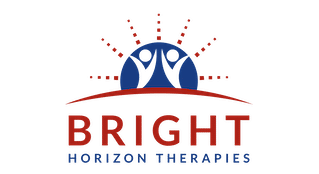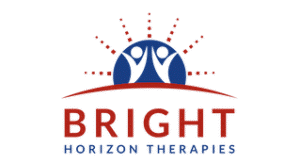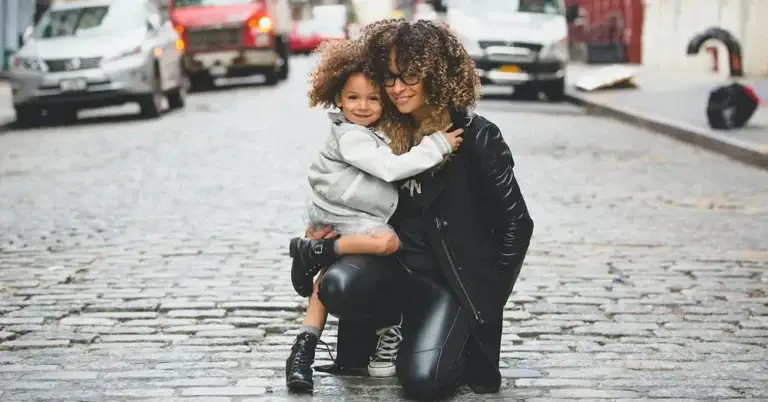Setting healthy boundaries was not something I learned as a child. I grew up in a family with toxic dynamics where my boundaries were often ignored or violated. Boundaries were never discussed, so as a young adult, I didn’t know how to protect myself or communicate my needs effectively.
For those of us who are adults with childhood abuse, this is a common experience. Setting boundaries might have led to conflict, punishment, or even physical harm, so it often felt safer not to assert them. Parts of us may adopt a fawn response—a trauma-driven way of letting go of our boundaries to stay safe. While these coping mechanisms helped us survive childhood, they can make it challenging to build healthy relationships as adults.
Learning to set healthy boundaries in relationships is therefore not just useful—it’s essential. Boundaries form the foundation of healthy relationships with others and a respectful relationship with ourselves. While we can’t control how others behave, we can develop the skills to protect our boundaries. Setting healthy boundaries is not a one-time achievement; it’s a daily practice and an ongoing journey of growth.
What is setting healthy boundaries all about?
Our boundaries act as a fence and have several functions in our lives. First, they protect us from harmful behaviours that are not ok for us because they support us in keeping those behaviours outside the fence. They also allow us to set a standard for our lives by setting a standard about how we want to be treated. They also define who we are as individuals. Furthermore, setting healthy boundaries help us in letting go of relationships that aren’t good for us anymore. Lastly, healthy boundaries help us manage our energy levels and time commitments and protect us from burn-out.
Overall, setting healthy boundaries is an act of self-respect. It is an art we need to learn as adults. Setting healthy boundaries reduces our risk for burnout, stress, fatigue, and health problems and increases our well-being.
“It is necessary, and even vital, to set standards for your life and the people you allow in.” Mandy Hale
Characteristics of boundaries
- Boundaries are personal.
Each of us is unique, so we have different boundaries. And that’s ok. We need to learn to accept, respect and embrace our differences. For example, I have never in my life liked yelling because it is not ok for me. However, it might be ok for another person. - Boundaries need to be communicated.
Since our boundaries are unique and different, other people cannot know them because their boundaries might be very different. Therefore, we need to communicate our boundaries. - They depend on the relationship and the context.
Our boundaries may often also differ depending on the relationship and the context. No one-fits-all recipe for boundaries can be used for every relationship. We need to be flexible and adjust them to the specific relationship and context. - They may change over time.
Boundaries may change throughout our relationships as well as through personal growth.
What are generally harmful behaviours?
While each person has individual behaviours that are not ok for them, there are certain behaviours that, in general, violate our boundaries. These behaviours include:
- Any abusive behaviour, whether it is physical, sexual, or emotionally abusive behaviour from another person.
- If you are the target of manipulative actions or bullying.
- Any behaviour that intends to overpower you, e.g. you are confronted with a person who has an “I win, you lose” mentality or a “my way or the highway” mentality
- In case another person takes advantage of you or doesn’t appreciate you.
- If you are the target of contempt, ridicule, mockery, and sarcasm.
- Whenever you are exposed to heavy judgments and constant criticism.
- If you are the target for any racist or discriminative behaviour or targeted by microaggressions.
While these behaviours violate our boundaries, we can also take specific actions to strengthen them: Boundaries are in our bodies, so our bodies will signal us where our boundary is. We can improve our boundaries when we say no when our inner sense is no and when we say yes if our inner sense is yes. Furthermore, we strengthen our boundaries by respecting our feelings and intuition. We also empower ourselves if we stand up for ourselves if our boundaries have been harmed. Last, we can take care of our boundaries if we are curious about ourselves and find out who we are.
Emotional signal
Our emotions are usually a good indicator of boundary violations: Some people experience anger if their boundaries have been crossed. Some people may experience resentment, confusion, or irritation.
For some people, constantly blaming another person or finding justifications for behaviours that are not acceptable can also be a sign that their boundaries have been violated.
Challenges in setting healthy boundaries
Sometimes, we have unconscious patterns that prevent us from setting healthy boundaries.
- Shame and guilt
Both emotions often cause us to abandon ourselves and neglect our boundaries. Sometimes, there are complex interdependencies between shame and guilt and past traumatic experiences. It may require some healing to work with these patterns. - Fawn response
The fawn response is a trauma-response where we abandon our needs to avoid conflict, criticism or disapproval. While this was an adaptive coping response to past traumatic experiences, it may not serve us well in current relationships. Therefore, it can be necessary to ask for professional help to overcome this pattern. - Painful childhood experiences or childhood trauma
Childhood abuse – whether emotional, physical, or sexual – violates our boundaries. Furthermore, relational trauma can also impact our capacity to set healthy boundaries. However, as children, we often need to find adaptive coping skills to survive in these situations. As adults, it may be necessary that we do some deeper healing to increase our capacity to setting healthy boundaries. It is ok to ask for professional help. You are not alone in this. Trauma counselling can help individuals to heal from trauma.
How do healthy boundaries look like?
Often, we need to learn how it feels like to have healthy boundaries. Therefore, it’s hard to recognize if we are setting healthy boundaries or still using adaptive coping skills. So, how can you recognize that your boundaries are healthy? Here are some signs that indicate that you have healthy boundaries:
- Emotional well-being
Your boundaries are healthy if you experience emotional well-being. This includes that you feel good about yourself and that you have an optimistic perspective on the future. You can manage stress well and experience happiness and satisfaction. - Embracing your uniqueness
If you have healthy boundaries, you have a strong sense of your identity. Also, you know who you are and who you are not. Furthermore, you take responsibility for your life and can hold people accountable for theirs (e.g. you don’t need to rescue them). Additionally, you know what is yours and what is not yours. Apart from this, you put yourself first, even if you risk letting somebody down. In addition to this, you stick to your values and stay in integrity even if you fear being rejected. - Accepting our differences
If we have healthy boundaries we see that we are unique individuals, but we can also accept our differences. We respect each other while allowing ourselves to be who we are. For example, I am a cat lover, and some of my friends don’t like cats. And that is okay. I respect that she does not like cats, and I try to keep my cats away.
How do you feel about the quality of your boundaries after reading this article? Which areas are you feeling confident about? Which areas would you like to improve?
Sources
My professional training, ongoing study, professional experience, and the works of trusted authors and organizations in mental health and social justice inform this article. The references below include the books, trainings, and evidence-based resources that shaped my understanding and approach, providing context and support for the ideas discussed here.
Center for Right Relationships (2012). Organization & relationship systems coaching training [in-person training curriculum]. Center for Right Relationships
Instituto Europeo de Coaching. (2011). Certificación internacional en coaching: Nivel experto en coaching [International certification in coaching: Expert level in coaching] [Diploma, 210 hours]
Riso, W. (2006). Los límites del amor: Hasta dónde amarte sin renunciar a lo que soy [The limits of love: How to love without renouncing who I am]. Editorial Norma.
Katherine, A. (1994). Boundaries: Where you end and I begin: How to recognize and set healthy boundaries. Hazelden Publishing



